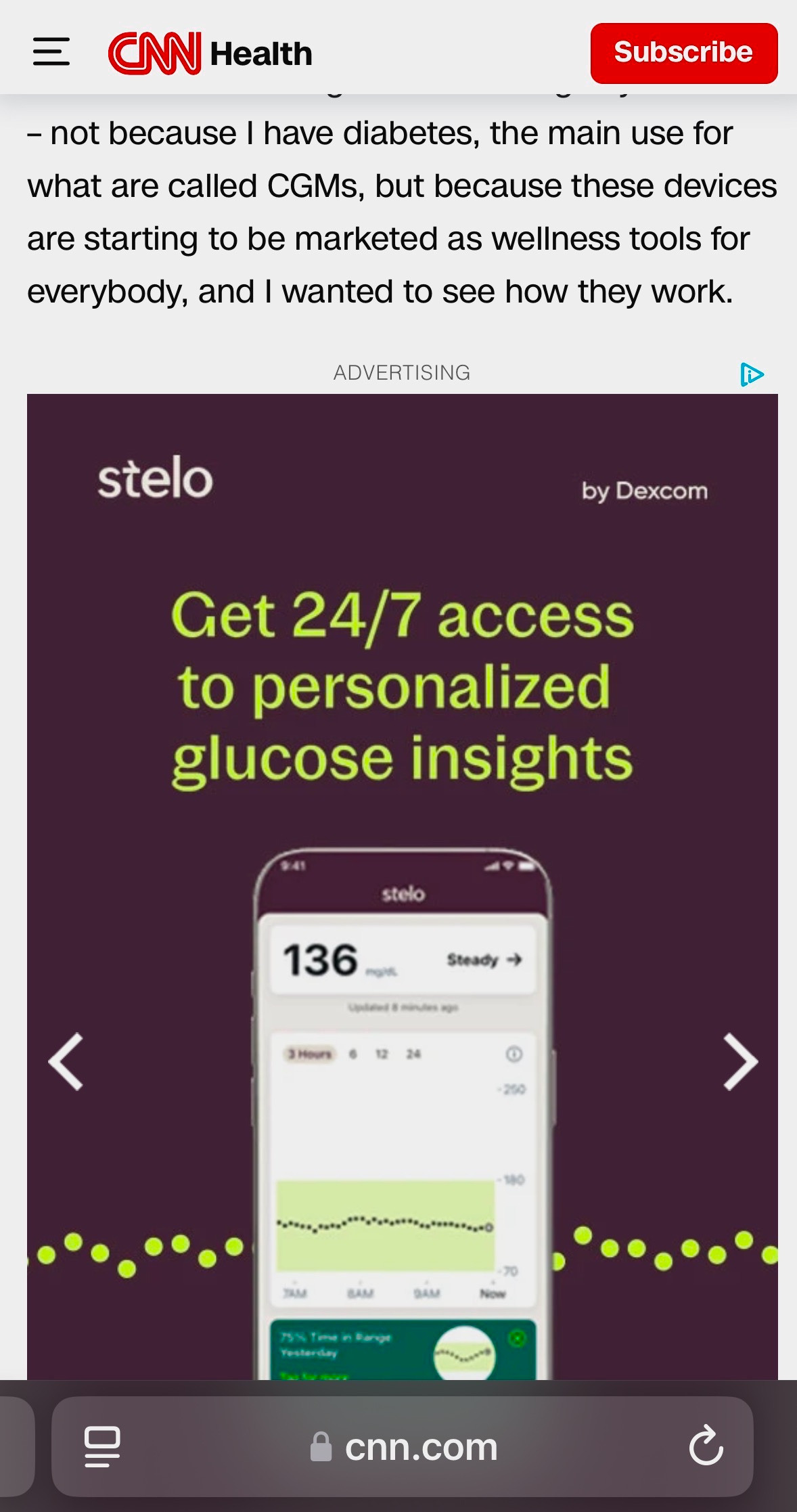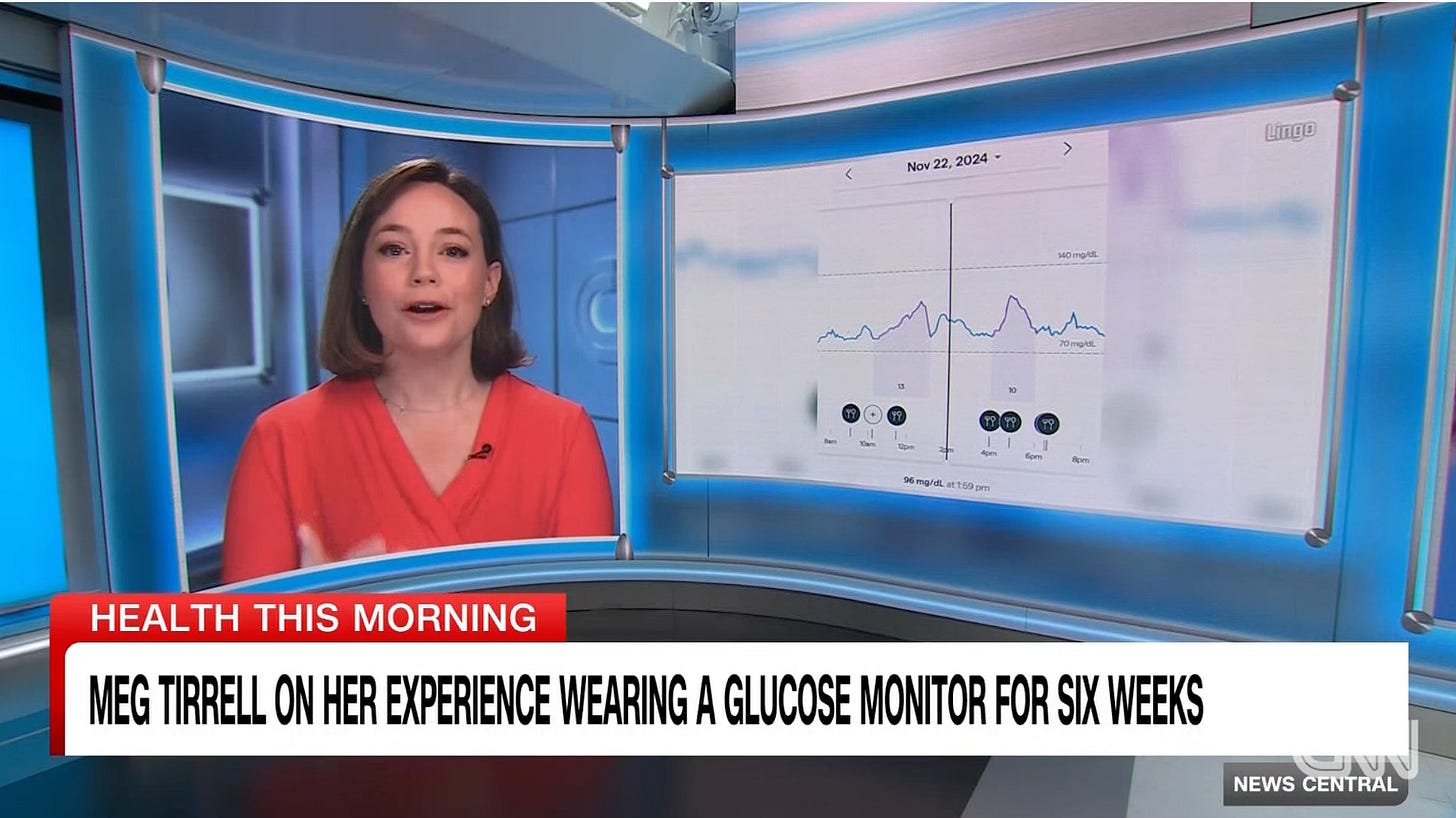Journalists: please don't make yourself part of a health news story
Your story may hold no relevance for anyone else and may come off more like marketing than journalism
For years I have criticized journalists who report on their own:
colonoscopies (especially on TV)
digital rectal exams (a low point on the NBC Today Show when Matt Lauer and Al Roker did this…with a timer…and lots of laughs…on live TV)
mammograms
diets
choices for difficult, complex, highly personal health care decisions
choices of treatments, tests, products or procedures without any or adequate discussion of the quality of the evidence for such interventions.
Why are these a problem? Because when I started my 50-year career in health care journalism in a newsroom with sound fundamental training, I was taught and I have always believed that you, the reporter, are not the story. If you think you are, you should be in show business. Your singular anecdote about your own choice or your own condition or your own experience may not be (and probably is not) generalizable to a huge portion of your readers or listeners or viewers. You may have access to certain interventions that few of your followers would. Therefore what you choose and what you tout from your media platform may be a poor choice or an unavailable option for many others. And what are often promoted are interventions that are not wholly supported by the evidence. So why is your story newsworthy? And who in your news organization is letting this kind of stuff pass as news?
So when I saw the following CNN story I was thunderstruck. It was headlined:
I don’t have diabetes, but I wore a glucose monitor for six weeks. Here’s what I learned about food (and anxiety)
A young, healthy journalist who does not have diabetes or even pre-diabetes reported on her own experience wearing a continuous glucose monitor (CGM)- which is intended for people at high risk of, or already diagnosed with, high blood sugar or diabetes. In those people, the monitors have been very popular and render some clear benefits. But the journalist said that she did this “because these devices are starting to be marketed as wellness tools for everybody.” Two companies received FDA approval this year to market over-the-counter CGMs even to non-diabetics. When I read the CNN story on my smart phone, it was annoying to see ads for one of the devices plunked down right in the middle of the CGM story. But that’s one of the ways that media companies make money. An advertising policy that wouldn’t allow such juxtaposition would be an important ethical step.
(Not only have marketing wars begun, the two companies are battling in court over patent issues.) So, was a deep analytical dive forthcoming from CNN? Not quite.
In the text story that accompanied the on-air version, three people who were quoted were clear proponents of CGM use. One woman used one of the devices herself because she has Type 1 diabetes (not the case with the journalist). Another was an FDA official who touted the devices in an FDA news release after the agency approved a new CGM. The third was a physician whose conflict of interest (advising a CGM company) was disclosed. So the second and third people quoted were not the most likely to emphasize the downsides of such use in healthy people.
The number of voices in the story stating serious concerns: zero…nada…zilch.
So from this angle, the story was imbalanced. Whom you choose to quote has a powerful impact on the final product.
It was not difficult for me to find other sides to this story and to the use of CGMs in the worried well. They weren’t cynics; they simply raised important issues. These concerns could have been covered quite easily by CNN.
Victor M. Montori, M.D., is a professor of medicine at the Mayo Clinic, who is known for promoting the practice of evidence-based medicine in endocrinology and diabetes care. He also leads a project called The Patient Revolution.
“I don’t necessarily see the connection between spikes in glucose values in response to mixed meals and disease prevention by avoiding components of those meals that in isolation moved the needle and that ignore the contributions of environment, mood, stress, activity, menstrual period, etc., which combine in super complex ways that make the results in reality feel random.
One can speculate more easily on the consequences of relating to food as disease prevention or as treatment. One does not need to go all the way to an eating disorder to end up pathologizing eating or medicalizing overweight.
‘But it is just a tool’… the only reason this exists is because it is possible, not because it is necessary. The marketing is designed to make it seem as if people need to know this information.”
Richard Hoffman, MD, Emeritus Professor of Internal Medicine at the University of Iowa, thought that the text version of the story was reasonably balanced. (Disclosure: he was a long-time contributor to my HealthNewsReview website.) But he wrote to me:
“I think CMG may be helpful for prompting people to make changes in diet (less snacking) and exercise (more), but I’m concerned about patients sending data dumps to their primary care clinicians and expecting to get prompt and detailed guidance. Her experience with her Beth Israel Deaconess Medial Center clinician was atypical, but she also quotes the UCSF professor who says that patients should receive help interpreting the data. I think that patients should work with nutritionists. However, the overall value of marketing an $89 per month device to the worried well population seems dubious, particularly when added to the considerable cardiovascular, sleep, etc. data already being collected by wearables.”
Archana Sadhu, MD, an endocrinologist at Houston Methodist Medical Center, was interviewed for an article on the hospital’s website.
“Outside of diabetes management, Dr. Sadhu is pretty skeptical — if not outright concerned — about most non-diabetics using a CGM. …
‘My biggest concern about people using these devices in unintended ways is the anxiety it can cause and, because of that anxiety, the inappropriate actions that may be taken,’ warns Dr. Sadhu.
(Take) the example of the healthy 20-year-old who gets a "low" blood sugar alert — what's the next step? Eating a quick source of simple carbs, like a bag of chips, to bring your blood sugar back up?
Think again.
‘That's a completely normal reading for a healthy person, but now they're panicking about something they don't need to panic about and, potentially even worse, taking an unnecessary action that's actually unhealthy,’ says Dr. Sadhu. ‘Or maybe the person sees a spike and panics. But, again, a blood sugar spike isn't usually an immediate concern for healthy people.’
Robert H. Shmerling, MD, Senior Faculty Editor, Harvard Health Publishing, wrote that there’s little published research to spell out what the health benefits may be from CGM use in healthy people.
“Several companies are working hard to…begin marketing implantable blood sugar measuring devices to people without diabetes. …These companies could reap enormous profits by convincing healthy people without diabetes (or other blood sugar problems) to start monitoring blood sugar. …
But I could find no published study suggesting that monitoring translates into improved health for healthy people without diabetes or other blood sugar problems.
So, until more studies prove the value of CGM for people without diabetes, we won't know whether the cost and time it takes to implant one of these systems is accomplishing anything or is just the latest health monitoring fad wasting effort and money.
And it's unlikely that health insurers will cover CGMs for people without diabetes, at least until there is compelling evidence that they're actually helpful.”
He also addressed the old adage that “knowledge is power.”
But truly, knowledge that is useless, redundant, or inaccurate doesn't make you powerful! It may even be harmful. For example, if biologically insignificant drops in blood sugar lead you to snack more ("to avoid hypoglycemia/low blood sugar"), you could gain weight and actually increase your risk of developing diabetes. If the monitoring system sometimes provides inaccurate information or false alarms, unnecessary anxiety, calls or visits to the doctor, visits to an emergency room, and even inappropriate treatment may follow.
Unfortunately, some makers of CGM systems aren't waiting for solid research results to market these devices to healthy people. So, consumers and marketing professionals — not researchers or doctors — may wind up driving demand for the product.
For any new technology there's a scientific learning curve to figure out when to use it. In my view, we're at the very beginning of the learning curve for home monitoring of blood sugar in people without diabetes. Before buying into what may be the next fad in health monitoring, I think we need to learn a lot more.
There is wisdom in the teachings of one of my favorite professors in medical school: "Just because you can measure something doesn't mean you should."
The Houston Methodist article reminds people who do not have diabetes:
“…rather than relying on one of these devices, Dr. Sadhu has some simple — not to mention totally free — diabetes prevention tips she recommends everyone follow:
Eat whole, natural foods
Be physically active every single day
Avoid processed foods
Limit added sugars”
That ending would have added more balance to the CNN story.
In the end, the CNN journalist said this on the air:
“For me it caused a lot of anxiety and apathy, I have to say.”
In the text piece, she mentioned “worries…too nervous to eat normally…eating abnormally…concerns that an apple was too sugary…a few episodes of hanger,” etc. Which, is, in a way, a note of balance. It provides a glimpse of how easy it can be to “pathologize eating,” as Victor Montori stated. And to quickly turn a normal, healthy life into a life obsessed with numbers that might not mean anything important. One non-diabetic MD said on YouTube about her CGM experiment: “The time suck and distraction was a real issue for me.”
The story of continuous glucose monitoring is much different for people with diabetes than for people without diabetes. The potential benefits and the potential harms are different. Marketing and media messages can’t emphasize that enough. But I think they can do better than this example.
(Disclosure: I once headed the CNN Medical News Unit, but that was more than 35 years ago, so it’s ancient history with no connection to the staff or company today. But I do know that reporters often don’t have full control of their story and that there are other voices that may impact the final product.)






Thank you thank you thank you Gary. As ever, you are spot on.
It's ironic that at the same time I published this article, the Association of Health Care Journalists was publishing, "How and why to write personal essays and first-person reported features." https://healthjournalism.org/blog/2024/12/how-and-why-to-write-personal-essays-and-first-person-reported-features/. A completely different world view, with excerpts such as: "There are reasons (beyond potentially attracting more readers) to consider branching out into first-person territory....You don’t have to wait for something to happen to you, either; you can create a story by inserting yourself into a controversial trend or visiting a buzzy spot, for example...Including your voice in a story pitch can help set your ideas apart in a competitive freelance market, too." It's a good thing that I'm retired.